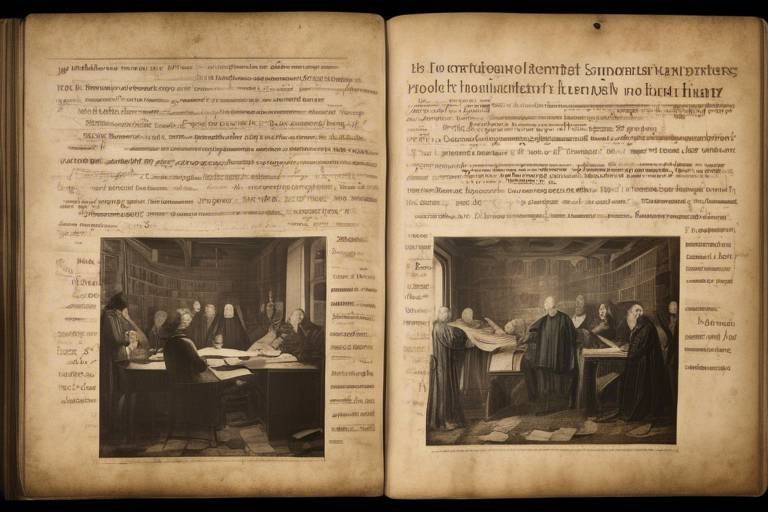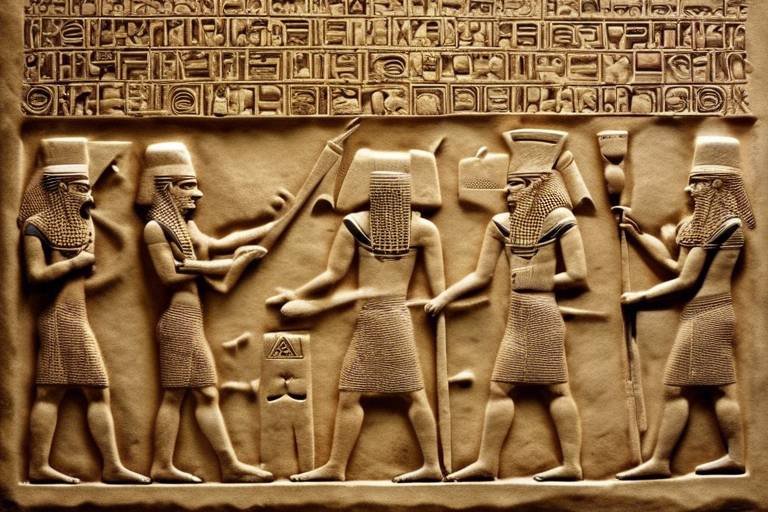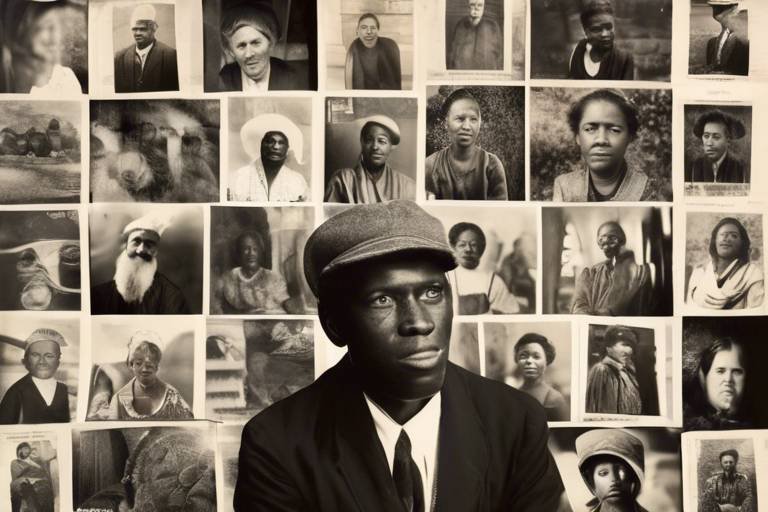The Role of Digital Humanities in Understanding History
Digitization of historical documents has revolutionized the way we interact with the past. By converting fragile manuscripts, ancient scrolls, and historical records into digital formats, we ensure their preservation for future generations. This process not only safeguards these invaluable artifacts but also opens up a world of possibilities for researchers, students, and history enthusiasts worldwide.
Data visualization plays a crucial role in historical analysis, allowing us to uncover hidden patterns and trends within vast amounts of historical data. Through interactive charts, graphs, and maps, researchers can present complex information in a visually appealing manner, making it easier to comprehend and draw meaningful conclusions from historical events.
Text mining tools have become indispensable in the field of history, enabling scholars to delve into extensive archives of historical texts with unprecedented speed and accuracy. By extracting key insights, connections, and themes from these texts, researchers can gain fresh perspectives on past events and uncover narratives that were previously overlooked.
Geospatial analysis and mapping tools offer a unique perspective on historical research by visualizing spatial relationships and movements over time. From tracing the paths of ancient civilizations to mapping the evolution of cities, these tools provide a dynamic way to explore the geographical context of historical events and understand how landscapes have shaped human history.
Digital archives and repositories serve as virtual treasure troves of historical materials, offering researchers access to primary sources from across the globe. By digitizing rare manuscripts, photographs, and artifacts, these repositories facilitate collaborative research efforts and provide a platform for scholars to exchange ideas and discoveries in the digital realm.
Virtual reconstructions of historical sites bring the past to life in ways never before imagined. Through immersive digital technologies, researchers and the public can explore ancient landmarks, walk through long-lost cities, and experience historical events firsthand. These virtual reconstructions offer a glimpse into the past that transcends traditional methods of historical interpretation.
Text encoding has revolutionized the way we engage with historical texts, allowing scholars to create digital editions that are easily searchable, annotated, and compared. By encoding texts in standardized formats, researchers can analyze multiple versions of a text simultaneously, uncovering variations, annotations, and historical context that enrich our understanding of the past.
Despite the many benefits of digital humanities in historical research, challenges and ethical considerations persist. Issues such as data privacy, authenticity of digital sources, and the potential for bias in algorithms raise important questions about the use of digital tools in interpreting history. Navigating these challenges requires a thoughtful approach that balances technological advancements with ethical responsibilities towards the past.

Digitization of Historical Documents
Digital humanities have revolutionized the way historical documents are preserved and accessed through the process of digitization. This method involves converting physical historical documents into digital formats, ensuring their longevity and enabling widespread online availability. By digitizing historical documents, researchers, students, and history enthusiasts can explore a treasure trove of information that was previously confined to physical archives.
One of the key benefits of digitizing historical documents is the enhanced search and analysis capabilities it offers. With advanced search functionalities, users can locate specific information within vast collections of historical documents quickly. Moreover, researchers can conduct in-depth analyses, compare different texts, and extract valuable insights with ease, thanks to the digitization process.
Through digitization, historical documents are not only preserved for future generations but also made accessible to a global audience. This accessibility transcends geographical boundaries, allowing individuals from diverse backgrounds to engage with historical materials that were once confined to specific institutions or locations. The democratization of historical information through digitization fosters a deeper understanding and appreciation of our collective past.

Data Visualization in Historical Analysis
Data visualization plays a crucial role in historical analysis by transforming complex historical data into visually appealing representations that are easy to understand and interpret. By utilizing various data visualization techniques, historians can uncover hidden patterns, trends, and relationships within historical information that may not be apparent when looking at raw data alone.
One common method of data visualization in historical analysis is through the use of charts, graphs, and maps. These visual representations allow historians to present historical data in a clear and concise manner, making it easier for researchers and the general public to grasp the significance of historical events and trends. For example, a timeline chart can visually illustrate the sequence of events in a historical period, while a heat map can show the distribution of a particular phenomenon geographically.
By employing data visualization tools, historians can effectively communicate their findings and insights to a wider audience, making history more engaging and accessible to people from all walks of life. Visualizing historical data not only enhances the understanding of past events but also encourages critical thinking and analysis, fostering a deeper appreciation for the complexities of history.

Text Mining and Analysis in History
Text mining and analysis play a crucial role in historical research by allowing scholars to delve deep into large volumes of historical texts to uncover hidden insights and connections. By utilizing text mining tools, researchers can extract valuable information from texts that may have been previously overlooked. This process involves the use of algorithms to identify patterns, trends, and relationships within the text, providing a new perspective on historical events.
One of the key advantages of text mining in history is its ability to streamline the analysis process, enabling researchers to sift through vast amounts of text quickly and efficiently. By automating the extraction of information, historians can focus their efforts on interpreting the data rather than spending hours manually combing through documents. This not only saves time but also opens up new possibilities for exploring historical narratives in a more comprehensive manner.
Moreover, text analysis tools allow historians to compare and contrast different versions of texts, track changes over time, and identify linguistic patterns that reveal insights into the social and cultural context of the period. By digitizing historical texts and applying text mining techniques, researchers can gain a deeper understanding of the language, themes, and perspectives prevalent in historical documents.
Text mining also facilitates cross-referencing and linking of information across various texts, enabling scholars to create interconnected networks of knowledge. By identifying common themes, references, and keywords, historians can map out relationships between different historical sources and construct a more cohesive narrative of the past.
Overall, text mining and analysis in history offer a powerful set of tools for researchers to uncover hidden connections, extract valuable insights, and gain a deeper understanding of historical events. By harnessing the capabilities of text mining technologies, historians can enhance their research methodologies and contribute to a more nuanced interpretation of the past.

Geospatial Analysis and Mapping in Historical Research
Geospatial analysis and mapping play a crucial role in historical research by providing a visual representation of spatial relationships, historical movements, and geographical contexts. By utilizing geospatial analysis tools, historians can map out the locations of historical events, track the movements of individuals or groups, and visualize how landscapes have changed over time. This method allows for a deeper understanding of historical events by placing them within their geographical contexts, helping researchers to uncover connections and patterns that may not be apparent through traditional textual analysis alone.

Digital Archives and Repositories
Digital archives and repositories play a crucial role in the preservation and dissemination of historical materials. These digital platforms serve as virtual libraries, housing a vast collection of primary sources that can be accessed by researchers, students, and the general public. By digitizing historical documents, manuscripts, photographs, and other artifacts, these repositories ensure the long-term preservation of valuable historical information.
Moreover, digital archives enhance accessibility to historical materials that were once confined to physical archives or limited to a select group of scholars. With just a few clicks, users can explore a wealth of historical resources from the comfort of their homes, eliminating barriers to research and promoting a more inclusive approach to studying history.
One of the key advantages of digital archives is the ease of search and retrieval they offer. Users can perform advanced searches, filter results, and access detailed metadata associated with each item, facilitating efficient research and analysis. Additionally, these repositories often provide tools for collaborative research, enabling scholars from around the world to collaborate on projects and share their findings.
Furthermore, digital archives contribute to the democratization of knowledge by promoting open access to historical materials. By making primary sources freely available online, these repositories empower individuals to engage with history firsthand, fostering a deeper understanding of the past and encouraging critical thinking.
In conclusion, digital archives and repositories serve as invaluable resources for historians, researchers, educators, and history enthusiasts alike. By harnessing the power of technology to preserve, organize, and share historical materials, these digital platforms are revolutionizing the way we access and interact with the past.

Virtual Reconstructions of Historical Sites
Virtual reconstructions of historical sites using digital technologies have revolutionized the way we engage with the past. By leveraging advanced tools and techniques, researchers and the public alike can immerse themselves in historical environments like never before. These reconstructions go beyond mere visual representations, offering interactive experiences that transport users back in time.
Imagine walking through the streets of ancient Rome, exploring the majestic pyramids of Egypt, or witnessing the grandeur of medieval castles—all from the comfort of your own home. Virtual reconstructions bring history to life in a way that traditional methods cannot, allowing us to experience the sights and sounds of bygone eras firsthand.
Through detailed 3D models, accurate depictions of architecture, and realistic landscapes, virtual reconstructions provide a glimpse into the past that is both educational and captivating. Users can navigate through historical sites, interact with objects, and gain a deeper understanding of the cultural and societal contexts in which these places existed.
Moreover, these digital reconstructions enable researchers to conduct virtual experiments, test hypotheses, and explore different scenarios within historical settings. By combining archaeological data, historical records, and cutting-edge technology, scholars can reconstruct lost worlds with a level of detail and accuracy that was once unimaginable.
Overall, virtual reconstructions of historical sites offer a unique blend of education, entertainment, and exploration. They bridge the gap between the past and the present, allowing us to connect with history in a dynamic and engaging way. As technology continues to advance, the possibilities for virtual reconstructions are endless, promising even more immersive experiences for future generations to enjoy.

Text Encoding and Digital Editions of Historical Texts
Text encoding plays a crucial role in creating digital editions of historical texts, allowing scholars to delve deep into the content with enhanced accessibility and analysis capabilities. By encoding historical texts, researchers can preserve the original format and structure while also making them searchable and interactive.
Through text encoding, historical texts can be marked up with metadata, annotations, and cross-references, enabling scholars to compare different versions, trace changes over time, and gain a comprehensive understanding of the text's evolution. This process not only facilitates research but also ensures the preservation of historical documents for future generations.
One of the key advantages of digital editions of historical texts is the ability to provide multiple layers of information, such as translations, interpretations, and critical notes, enhancing the reader's engagement and comprehension. Researchers can also apply advanced search functionalities to navigate through vast collections of historical texts efficiently.
Text encoding standards like TEI (Text Encoding Initiative) have revolutionized the way historical texts are presented and studied in the digital age. By adhering to established encoding guidelines, scholars can create structured and standardized editions that are interoperable and compatible with various digital platforms.

Challenges and Ethical Considerations in Digital History
When delving into the realm of digital history, one cannot overlook the myriad challenges and ethical considerations that come hand in hand with the utilization of digital humanities tools and methods. As historians and researchers harness the power of technology to uncover new insights and reshape our understanding of the past, they must also navigate a landscape fraught with complexities and dilemmas.
One of the primary challenges in digital history revolves around the issue of data privacy and security. As historical documents and materials are digitized and made available online, questions arise regarding who has access to this information and how it is being used. Ensuring the protection of sensitive data and respecting the privacy rights of individuals featured in historical records is a paramount concern in the digital age.
Moreover, the question of authenticity looms large in the digital history domain. With the ease of manipulating digital content, there is a risk of historical materials being altered or misrepresented. Historians must grapple with the challenge of verifying the authenticity of digital resources and discerning fact from fiction in an increasingly digitized historical landscape.
Another ethical consideration that arises in digital history is the issue of ownership and intellectual property rights. As historical documents are digitized and shared across various platforms, questions emerge regarding who owns the rights to these materials and how they should be attributed. Respecting the intellectual property rights of content creators and ensuring proper citation practices are essential aspects of conducting ethical research in the digital realm.
Furthermore, the democratization of historical knowledge through digital platforms raises questions about accessibility and inclusivity. While digital tools have the potential to make historical information more widely available, there is a risk of perpetuating biases and exclusionary practices in the digital sphere. Historians must be vigilant in ensuring that digital history initiatives are accessible to diverse audiences and do not reinforce existing power dynamics or marginalize certain voices.
In navigating these challenges and ethical considerations, it is imperative for scholars and practitioners in the field of digital history to engage in ongoing dialogue and reflection. By critically examining the implications of their digital practices and upholding ethical standards in their research, historians can harness the transformative potential of digital humanities while upholding the integrity of historical scholarship.
Frequently Asked Questions
- What is the significance of digital humanities in understanding history?
Digital humanities play a crucial role in transforming the study and interpretation of historical events by providing new insights, enhancing accessibility to historical information, and enabling advanced analysis through innovative tools and methods.
- How does the digitization of historical documents benefit researchers and the public?
The digitization of historical documents preserves them for future generations, makes them easily accessible online, and allows for advanced search capabilities, enabling researchers and the public to explore and study historical materials conveniently.
- Why is data visualization important in historical analysis?
Data visualization techniques help in representing complex historical information visually, identifying patterns, and communicating historical trends effectively, making it easier for researchers and historians to analyze and interpret vast amounts of data.
- What are the challenges and ethical considerations in using digital humanities tools for historical research?
Challenges such as data privacy, authenticity of digital materials, and ethical considerations related to the use of digital tools in historical research need to be carefully addressed to ensure the integrity and reliability of historical interpretations and analyses.



















